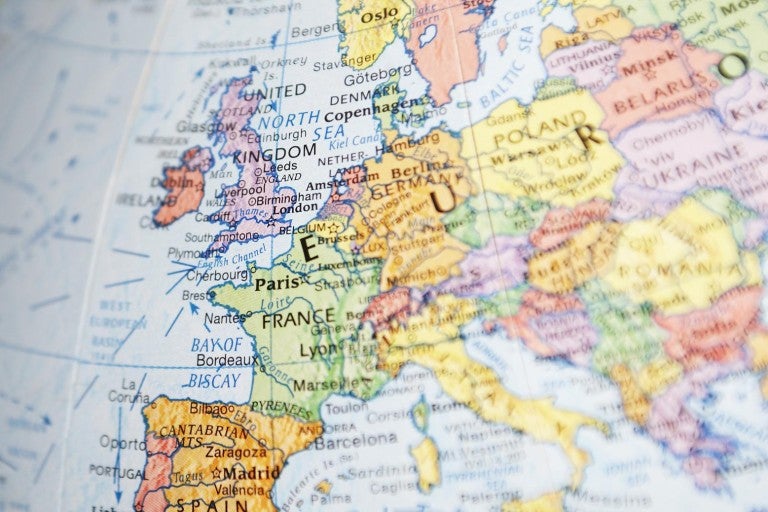August 13, 2015
A ceremonial first brick for the reconstruction of Gaza was recently put in place — a full year after the latest round of hostilities between Israel and Hamas — reminding us of the violence, poverty, and devastation under which the enclave’s 1.7 million inhabitants live.
But it didn’t have to be that way.
August 15 will mark the tenth anniversary of Israel’s withdrawal from Gaza. On that date in 2005, Israel began demolishing settlements and moving their approximately 9,000 residents out of the area, a process completed a month later when its last troops left. Convinced that the Palestinian leadership was not then a partner for peace and knowing that Gaza would not remain in Israeli hands under any conceivable permanent diplomatic arrangement down the road, then-Prime Minister Ariel Sharon had Israel unilaterally disengage from Gaza, which it had occupied in the course of the Six-Day War of 1967. Sharon defended the move as showing Israeli diplomatic flexibility in contrast to Palestinian intransigence. “It is out of strength and not weakness that we are taking this step,” he said.
Sharon expended considerable political capital to push Disengagement through the Knesset. Unable to secure a majority within his own Likud party — many of its MKs, charging him with going back on the party platform, insisted on a national referendum — Sharon negotiated a national unity government with the opposition Labor Party, in order to enact the necessary legislation. Executing the plan proved even more contentious. Many of the Jewish settlers in Gaza refused to leave voluntarily, and 14,000 soldiers and police officers were needed to forcibly evict them. Many of the evacuees and their sympathizers never forgave Sharon, and his policy decision remains controversial in Israel even today.
What is not controversial is that the Israeli withdrawal gave Gazans, for the first time in their history, the opportunity to rule themselves and to develop a functioning economy — a harbinger, it was hoped, of a prosperous West Bank- Gaza Palestinian state, at peace with Israel. According to an agreement brokered by the US, Israel and the Palestinians would facilitate the movement of people and goods between Gaza, Israel, and the West Bank, a seaport would be constructed in Gaza, and ultimately an airport as well. President Bush announced that the US was giving the PA $50 million, “for new housing and infrastructure projects in Gaza.” In removing its settlements, Israel left behind their greenhouses to be used for the economic development of the area.
But the almost immediate looting and destruction of the greenhouses after the Israelis left was the first sign that many Gazans were less interested in building than in tearing down. Another, even clearer sign came in the January 2006, when the Palestinian elections were won by Hamas, the Islamist faction that espouses antisemitism and calls for the destruction of Israel — its charter explicitly declares the group’s intention “to raise the banner of Allah over every inch of Palestine,” and quotes the infamous antisemitic Protocols of the Elders of Zion. The European Union, as well as the United States and several other countries, define Hamas as a terrorist organization.
A bloody, full-scale Palestinian civil war ensued between Hamas and the Palestinian Authority the following year, and Hamas took complete control of Gaza. The dream of making the area a showcase of peaceful and prosperous Palestinian sovereignty — which had been the aim of the Israeli pullout — was dead.
With Gaza under the thumb of Hamas, terrorists launched missiles and rockets into southern Israel, and dug terror tunnels deep into Israeli territory to be used for kidnapping and murder. Israel countered with a land and sea blockade to prevent arms from getting into Gaza, and there were repeated clashes between Hamas and Israeli forces. Three times, Israel has sought to bring quiet to its border with Gaza through large-scale military operations: “Cast Lead” in 2008, “Pillar of Defense” in 2012, and “Protective Edge” last summer. Each time, the deaths of Gaza civilians among whom the terrorists embedded themselves and the destruction of buildings from which they fired drew upon Israel widespread international condemnation.
Hamas has made Gaza into a devastated, impoverished nest of terror, preferring to spend money on tunnels and rockets rather than upgrading the civilian infrastructure. It not only threatens Israel, but also harbors Muslim Brotherhood cells that seek to overthrow the government of Egypt, and enjoys the support of Iran, the world’s leading sponsor of terrorism.
Recalling the circumstances of Israel’s withdrawal ten years ago, it clearly didn’t have to be that way. And today, it is surely in the interests of Israel, the local residents, and the international community to correct what went so horribly wrong and bring tranquility and economic stability to Gaza.



